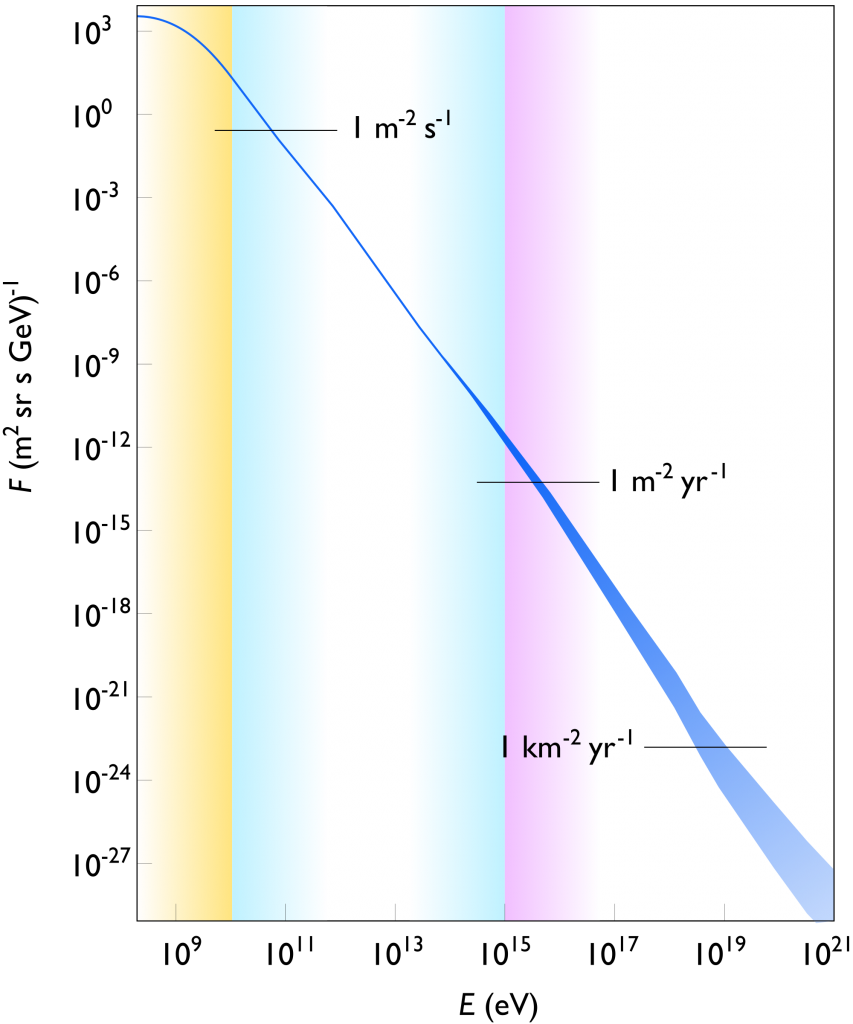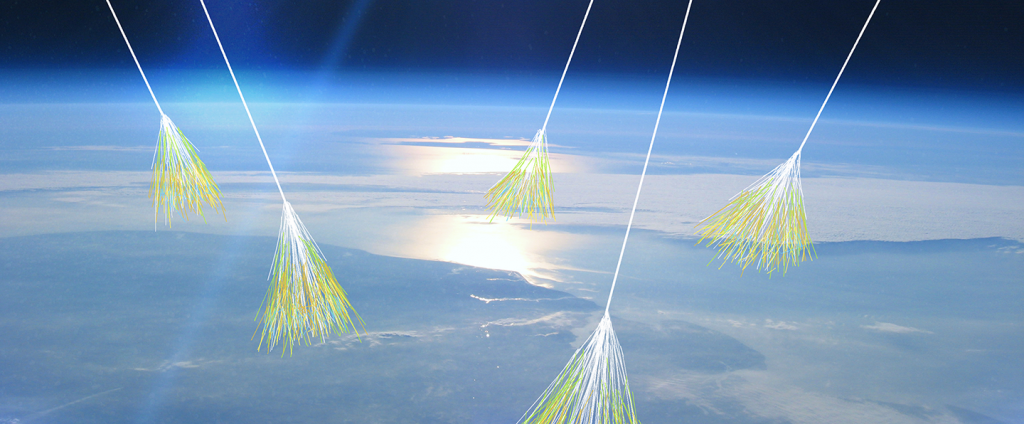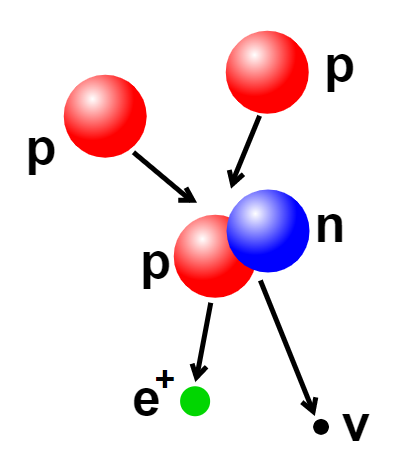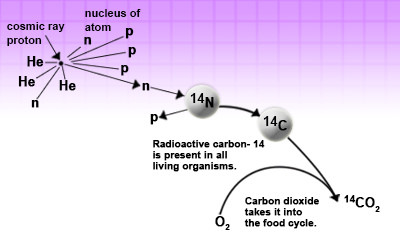A Cosmic Ray is an energetic particle Created when stars supernova, black holes eat, and binary stars merge. These extreme events produce powerful magnetic shockwaves accelerating some particles to near the speed of light 0.998c which we have come to know as Cosmic Rays.
The same processes that thrust heavy elements made inside stars and other extreme events, to form interstellar dust, asteroids, planets, and the building blocks for life.
Although commonly called a cosmic ray the term “ray” is a misnomer, as these particles arrive individually as primary particles, not as a ray or beams of particles. 90% are Protons, 9% helium nuclei, and the remainder electrons and positrons.
These primary particles will travel through the vastness of space for millions if not billions of years until they reach our earth’s atmosphere 30km above the Earth’s surface.
Matter smashing energy
When these particles hit the Earths’ atmosphere they do so with such tremendous energy they rip their way through with atom-smashing power. Cosmic rays are commonly known to have energies well over 10 x 21 eV (electron volts), far more than any particle accelerator built here on earth, like the Large Hadron Collider.

These interactions go on to produce an exotic zoo of high energy particles and anti-matter particles, high in the earth’s atmosphere such as positive and negative pions and kaons that subsequently decay into muons and muon-neutrinos. Pions decay to become the starting points of large cascades of electrons, positrons and gamma rays. The resulting flux of particles at ground level consists mainly of muons and electrons/positrons in the ratio of roughly 75:25 with energies greater than 4GeV travelling at near the speed of light 0.998c.
Cosmic Ray Spallation.
Cosmic Ray interactions within the Earth’s atmosphere can create some elements through a process called Cosmic Ray Spallation.
These interactions create energetic neutrons that collide with nitrogen atoms a nitrogen-14 (seven protons, seven neutrons) atom turns into a carbon-14 atom (six protons, eight neutrons) and a hydrogen atom (one proton, zero neutrons). Carbon-14 is radioactive, with a half-life of about 5,700 years and is used in carbon dating.
Natural interstellar events on earth
Muons created by the interaction of cosmic rays and our atmosphere lose their energy gradually. Muons start with high energies and therefore have the capacity to ionise many atoms before their energy is exhausted. However, as muons have little mass and travel at nearly the speed of light, so do not interact efficiently with other matter. This means they can travel through substantial distances of matter, before being stopped.
Consequently, muons are raining down and passing through just about everything. They can penetrate mountains, buildings, our bodies, and deep into the Earth’s surface, without anyone really being aware of their existence. Yet this radiation has been present throughout the entire evolutionary history of life on our earth.
Time Travellers
Muons created by the interaction of cosmic rays are an everyday demonstration of Einstein’s theory of special relativity. A muon has a measured mean lifetime of 2.2 microseconds. Consequently, they should only be able to travel a distance of 660 metres even at near the speed of light and so should not be capable of reaching the ground. However, Einstein’s theory of relativity tells us that time ticks slowly when moving at speeds close to that of light. Whilst the mean lifetime of the muon at rest is only a few microseconds. But when it moves at near the speed of light its lifetime is increased by a factor of ten or more giving them plenty of time to reach the ground.





